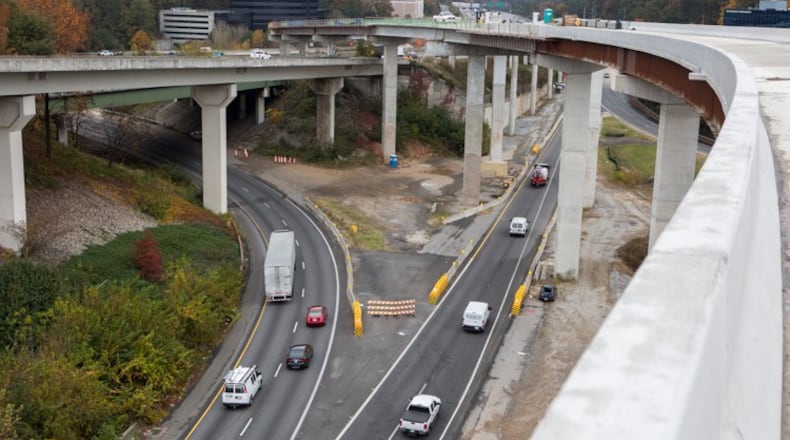As The Atlanta Journal-Constitution recently reported, Georgia's big idea for managing traffic congestion in the Atlanta area is a series of express toll lanes planned for the region's interstate highways.
Such lanes already exist on I-85 in Gwinnett County and on I-75 in Clayton and Henry counties. Next up: 30 miles of lanes on I-75 and I-575 in Cobb and Cherokee counties – a project known as the Northwest Corridor. Then an extension of the I-85 lanes.
Over the next decade, the state also will add express lanes on Ga. 400 and the top half of the Perimeter. When the work is done, metro Atlanta will have 120 miles of toll lanes.
Some folks like them; others can’t stand them. Either way, many wonder: Why doesn’t Georgia just build more “free” lanes (the state calls them “general purpose lanes”)?
The Georgia Department of Transportation’s answer: Free lanes won’t solve our traffic problems.
In a recent interview with the AJC, GDOT Commissioner Russell McMurry said many motorists avoid crowded stretches of highway, finding alternative routes.
“Then when you build more free lanes, people come right back to them and they’re congested right away,” he said.
McMurry said building free lanes also adds capacity that – for much of the day – goes to waste.
“It’s a supply and demand issue,” he said. “During the peak times, you need them. The rest of the time, you don’t need so many lanes.”
McMurry cited I-75 in Cobb County as an example of how ineffective free lanes can be. Above the Perimeter, I-75 is already up to 15 lanes wide in spots, and traffic still backs up at rush hour.
GDOT’s solution: Express lanes with variable tolls – up to 90 cents a mile. The worse the traffic, the higher the price. The goal is to raise the toll enough to discourage some people from using the express lanes – and guarantee those willing to pay they’ll be able to travel at least 45 mph.
In GDOT’s parlance, these “managed lanes” will do a better job of addressing traffic congestion than adding regular lanes that will fill up as soon as they open.
“You can’t widen your way out of congestion,” McMurry said. “You have to manage your way.”
You can learn more about GDOT's plans for express lanes in metro Atlanta here.
About the Author
The Latest
Featured


